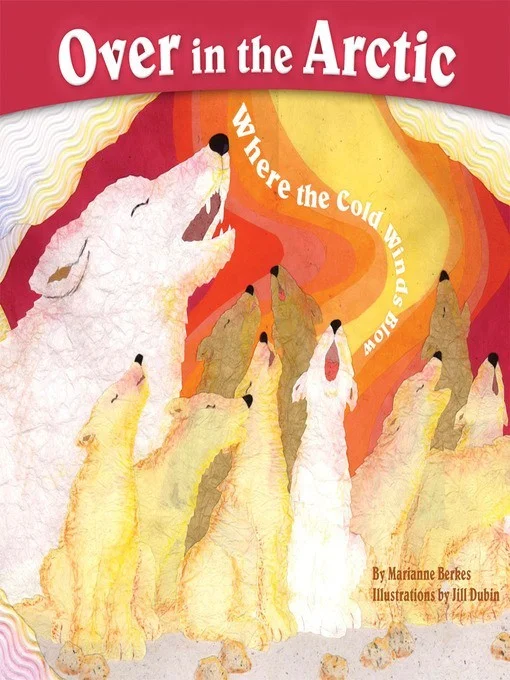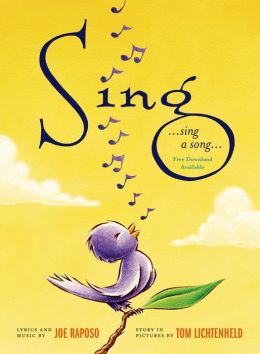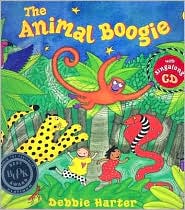Introduction: Our next book is called Over in the Arctic Where the Cold Winds Blow by Marianne Berkes. We can make the actions and sounds of the animals as we go along.
Read or Sing the book. After completing the book, come back to the page with the owls.
There are some interesting words on this page. There is a mother snowy owl. What color is the owl? And her little owlets seven. A baby owl is called an owlet. Let's say that together. It says here that the owls glide. Let me see how the mother owl glides (Let them show you wide wings with their arms). And how does a baby owlet glide? (wings/arms not so wide). What does flying look like? What does gliding look like? (more smooth, soar) and what does swooping look like? (from high to low--plunging, lunging, diving).
Early Literacy Aside--Example: Songs can give us words we might not hear in regular conversation. In this book, having fun with the action words can help children distinguish between words of similar meanings. This helps children learn small differences in the meanings of words which builds their vocabulary and helps them later understand what they read.



 Early Literacy Aside--Explain: Here's a rhyme that you can do anytime and it reinforces rhyming words which develops phonological awareness while having fun at the same time.Do Scarecrow, Scarecrow activity
Children stand up with arms bent at elbows like a scarecrow and head tilted. Actions to words.
Scarecrow, Scarecrow, turn around
Scarecrow, Scarecrow, jump up and down
Scarecrow, Scarecrow, raise your arms high
Scarecrow, Scarecrow, wink one eye
Scarecrow, Scarecrow, bend your knees
Scarecrow, Scarecrow, flap in the breeze
Scarecrow, Scarecrow, climb into bed
Scarecrow, Scarecrow, rest your head.
Early Literacy Aside--Explain: Here's a rhyme that you can do anytime and it reinforces rhyming words which develops phonological awareness while having fun at the same time.Do Scarecrow, Scarecrow activity
Children stand up with arms bent at elbows like a scarecrow and head tilted. Actions to words.
Scarecrow, Scarecrow, turn around
Scarecrow, Scarecrow, jump up and down
Scarecrow, Scarecrow, raise your arms high
Scarecrow, Scarecrow, wink one eye
Scarecrow, Scarecrow, bend your knees
Scarecrow, Scarecrow, flap in the breeze
Scarecrow, Scarecrow, climb into bed
Scarecrow, Scarecrow, rest your head. Early Literacy Aside--Explain: Research shows that there are early literacy skills that influence a child's ability to learn to read. Today, you will probably notice several places where I demonstrate examples of narrative skills, which is the ability to describe things and events and to tell stories. When you develop this skill, it will help your children understand what they reads later.Song: Bop 'Til You Drop
Go through the sequence of motions that are in the song, Bop 'Til You Drop
Early Literacy Aside--Example: Singing songs that have a certain order is one great way for children to remember the sequence or order of things. They will use the same skill when they retell a story. They learn how stories work.
Early Literacy Aside--Empower: One thing that you can do at home to develop narrative skills is to describe regular activities such as taking a bath--"first we'll get out the towel, then we'll put the water in the tub and add the bubbles/toys, then we'll take off your clothes, and get in the water. We can scrub our toes, our ears . . . " With older kids, let THEM describe the sequence of events with prompts like, "What do we have to do before we put the bubbles in? or "What do we do next?"
Early Literacy Aside--Explain: Research shows that there are early literacy skills that influence a child's ability to learn to read. Today, you will probably notice several places where I demonstrate examples of narrative skills, which is the ability to describe things and events and to tell stories. When you develop this skill, it will help your children understand what they reads later.Song: Bop 'Til You Drop
Go through the sequence of motions that are in the song, Bop 'Til You Drop
Early Literacy Aside--Example: Singing songs that have a certain order is one great way for children to remember the sequence or order of things. They will use the same skill when they retell a story. They learn how stories work.
Early Literacy Aside--Empower: One thing that you can do at home to develop narrative skills is to describe regular activities such as taking a bath--"first we'll get out the towel, then we'll put the water in the tub and add the bubbles/toys, then we'll take off your clothes, and get in the water. We can scrub our toes, our ears . . . " With older kids, let THEM describe the sequence of events with prompts like, "What do we have to do before we put the bubbles in? or "What do we do next?" Early Literacy Aside--Explain: Researchers have found that one of the early literacy skills is phonological awareness. This is the ability to hear and play with the smaller sounds in words, like rhyming and hearing the beginning sounds of words. Today I'll be pointing out ways you can help your children with this skill.Early Literacy Aside--Example: Our next book is one we can sing. Listen to all the rhymes in this book. Singing slows down language and rhyming breaks down words into parts. Both of these help your children hear the smaller sounds in words. You can also think of other words that rhyme, or add extra verses at the end.
Read the book Animal Boogie by Debbie Harter.
Early Literacy Aside--Explain: Researchers have found that one of the early literacy skills is phonological awareness. This is the ability to hear and play with the smaller sounds in words, like rhyming and hearing the beginning sounds of words. Today I'll be pointing out ways you can help your children with this skill.Early Literacy Aside--Example: Our next book is one we can sing. Listen to all the rhymes in this book. Singing slows down language and rhyming breaks down words into parts. Both of these help your children hear the smaller sounds in words. You can also think of other words that rhyme, or add extra verses at the end.
Read the book Animal Boogie by Debbie Harter. Early Literacy Aside--Explain: Singing songs is one good way for children to become aware of the different sounds that make up words. We call this phonological awareness. Singng helps them get a feel for the rhythm of language and how words are divided into syllables because there is a different note for each syllable. This will help them sound out words when they learn to read.
Submitted by Cindy Christin, Bozeman (MT) Public Library
Early Literacy Aside--Explain: Singing songs is one good way for children to become aware of the different sounds that make up words. We call this phonological awareness. Singng helps them get a feel for the rhythm of language and how words are divided into syllables because there is a different note for each syllable. This will help them sound out words when they learn to read.
Submitted by Cindy Christin, Bozeman (MT) Public Library Early Literacy Aside--Explain: Songs are a great way to incorporate the early literacy skill, phonological awareness. Hearing and learning animal sounds helps your children hear the smaller sounds in words and singing emphasizes different syllables. This helps your children later to sound out words.
Submitted by Wendy B. Rancier, Roanoke County (VA) Public Library
Early Literacy Aside--Explain: Songs are a great way to incorporate the early literacy skill, phonological awareness. Hearing and learning animal sounds helps your children hear the smaller sounds in words and singing emphasizes different syllables. This helps your children later to sound out words.
Submitted by Wendy B. Rancier, Roanoke County (VA) Public Library During several consecutive storytimes you would choose a song to sing every time. For example, I chose Row Your Boat.In each storytime we sing the song correctly:
Row, row, row your boat; gently down the stream
Merrily, merrily, merrily, merrily; life is but a dream.
Then we sing the song again in a silly way, changing the first sound of each word:
Bow, bow, bow, bour boat, bently, bown be bream
Berrily, berrily, berrily, berrily; bife bis but ba bream.
Then we sing it again correctly.
Early Literacy Aside--Example: Singing nonsense songs like this help children hear the smaller sounds in words, in a fun way! Try it with different songs. Being able to change the first sound in a word is part of phonological awareness.
During several consecutive storytimes you would choose a song to sing every time. For example, I chose Row Your Boat.In each storytime we sing the song correctly:
Row, row, row your boat; gently down the stream
Merrily, merrily, merrily, merrily; life is but a dream.
Then we sing the song again in a silly way, changing the first sound of each word:
Bow, bow, bow, bour boat, bently, bown be bream
Berrily, berrily, berrily, berrily; bife bis but ba bream.
Then we sing it again correctly.
Early Literacy Aside--Example: Singing nonsense songs like this help children hear the smaller sounds in words, in a fun way! Try it with different songs. Being able to change the first sound in a word is part of phonological awareness.